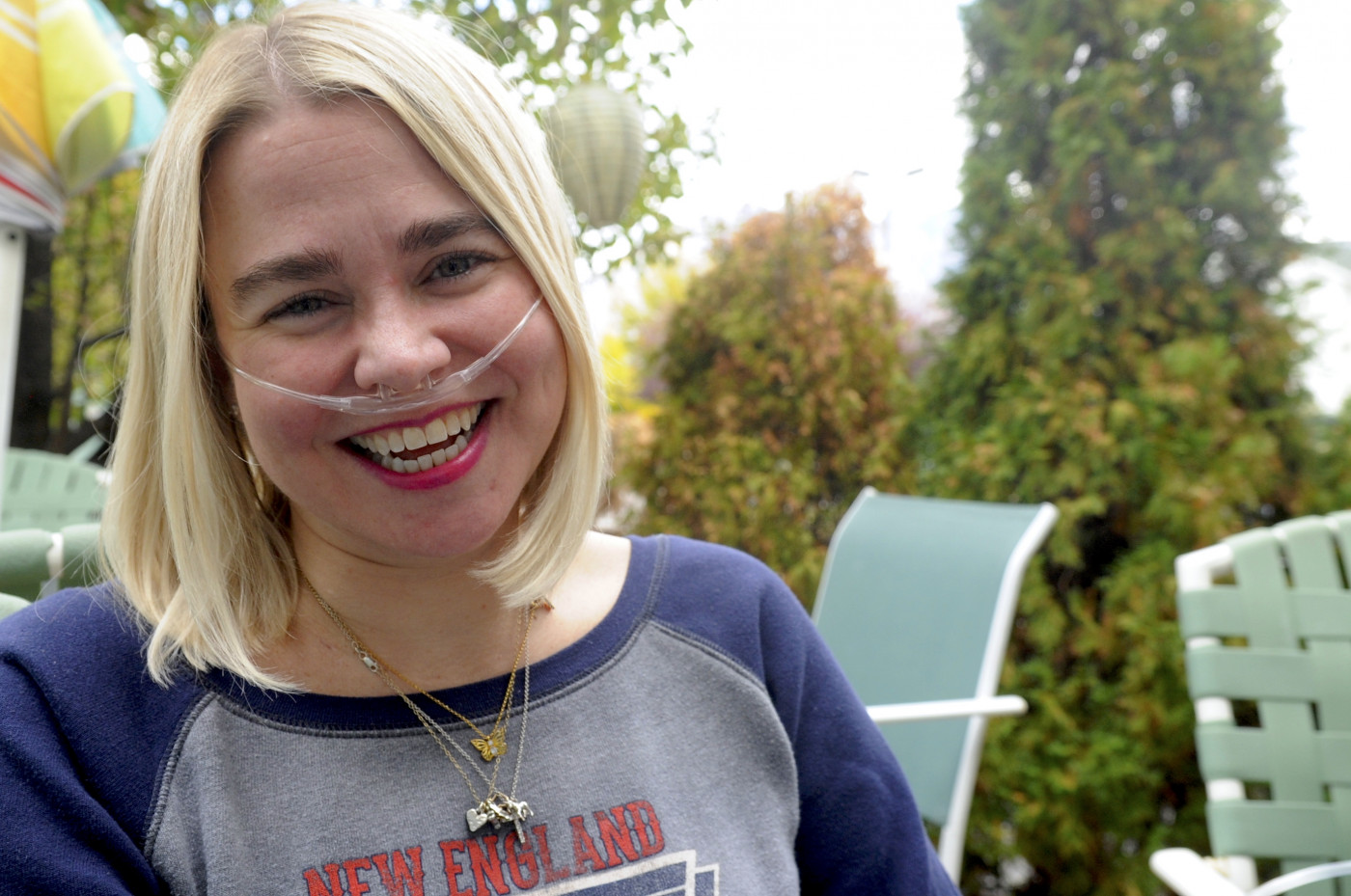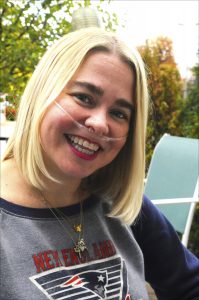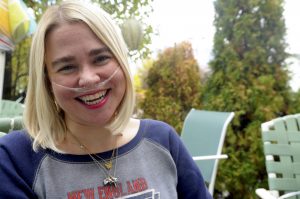Utah’s Somer Love Battles CF with Kindness and Strength

Somer Love of Salt Lake City, Utah. (Photo by Larry Luxner)
Somer Love is sitting at her favorite local hangout, the Landmark Grill in suburban Midvale, happily devouring her lunch. Looming on the horizon to the east are Utah’s majestic Wasatch Mountains, but at more than 10,000 feet above sea level, the range is strictly off-limits to Love — as is nearby Park City and its famous ski resorts, at 7,000 feet above sea level.
That’s because cystic fibrosis (CF) has left Love with only 27 percent of normal lung function.
“I haven’t been to Denver since I was a kid, because it’s harder to breathe there. Even Salt Lake City, at 4,500 feet, is hard,” she told Cystic Fibrosis News Today in a recent interview. “Growing up I was fine, because my lungs were healthier. But I think living in Utah at this higher elevation actually helped strengthen my lungs.”
Love, 39, moved here from New Jersey with her parents when she was nine months old. At 11 months she was diagnosed with CF after her mother had heard that babies who have a salty taste when kissed should be taken for testing.
“We were outside playing in a playpen, and I tasted salty,” she said. “My mom called our pediatrician for a sweat test. I was super healthy and fat. The doctor was probably thinking ‘crazy lady from Jersey.’ But she talked him into doing it, and when the results came back, he called my mother crying.”
Discuss the latest research in the CF News Today forums!
Growing up, Love received treatment from the Intermountain Cystic Fibrosis Center located at Primary Children’s Hospital and University of Utah Hospital in Salt Lake City.
Both centers are accredited by the Cystic Fibrosis Foundation (CFF) and serve mostly patients from Utah, Idaho, and Wyoming — with some coming from as far away as Montana and Nevada.
Love’s first hospitalization was at age 6; she began taking enzymes at 8, because no drugs were available back then. In eighth grade, she got her first nebulized medication.
‘Love to Breathe’
Because of her disease, she quickly developed a strong sense of activism and self-reliance.
“I’ve always been a really positive person. This stems from my parents, with whom I’m very close,” Love said. “They started the local CF chapter here and were on the board. They did everything in their power to help me. When you’re faced with such a challenge, you can either overcome it, or do nothing and let it overcome you.”
She added: “CF is basically my life, especially now that my disease has progressed. From the minute I wake up till the minute I go to bed, I’m constantly thinking about it. I literally think about every breath I take. I’m actually grateful for CF; it’s a blessing in an ugly disguise. It makes me appreciate things more.”
No surprise, then, that the website Love launched in 2001 is called “Love to Breathe” — a play on her last name.
Among other things, the site contains a blog with nearly 700 entries, a compendium of facts about CF, and dozens of photos, videos, and original paintings. There’s also a page dedicated to the CF activist’s #LoveToBreathe tokens; she’s sent out more than 10,000 of these little medallions to CF patients and supporters in all 50 U.S. states and more than 70 countries.
“I wanted parents to have a place to go for their newly diagnosed children,” she said. “There’s a lot of negativity out there on the Internet, and I wanted people to see somebody being positive. I’m an artist, so I started by sending my paintings to fundraisers all over the country.”
Love said the Internet is especially helpful to CF patients due to the isolating nature of the disease. “We cannot be around any other CF patients, so we connect online,” she said. “My website is a personal endeavor, a way for me to spread love and CF awareness.”
Even so, her main focus is on staying healthy. That means spending six hours a day doing her airway clearance and taking all her medications — about 60 to 80 pills daily. Her morning treatments are one-and-a-half to two hours each, and she must sterilize her “neb cups” afterward.
The transplant option
Love has been taking Symdeko (tezacaftor/ivacaftor and ivacaftor) twice a day ever since the combo therapy — developed by Vertex Pharmaceuticals — was approved in February 2018 by the U.S. Food and Drug Administration. But she must eat 10 to 20 grams of fat beforehand.
“Because of our gastrointestinal problems, we don’t absorb nutrients well, so one of the perks of CF is that we can eat whatever we want,” she said. Even so, Love is a vegetarian. She usually eats five small meals daily, with breakfast being her main meal — and she snacks all day long.
Speaking of food, each November, Love’s parents host an event called Taste of Utah. Tickets cost $200 each, and 30 restaurants around the state participate. Last year, the annual fundraiser generated just over $400,000 toward CF research.
Yet, Love herself doesn’t travel much. In fact, she said, “I’m never gone from my house for more than four hours. There are some days I can’t even get out of bed. I also have asthma, which makes things difficult.”
In addition, Love regularly experiences catamenial hemoptysis, a rare hormonal condition that causes her to cough up blood a couple of days before her period. And although she doesn’t have CF-related diabetes or liver disease, motherhood, she said, isn’t a good option for her.
“I grew up knowing that I wasn’t going to have kids,” she said. “I’ve had many friends with CF who have kids, and their health takes a huge decline. Also, I could never be the kind of mom I would want to be. When your child is sick, your first instinct is to cuddle them. But if we get sick, it’s a two-week stay in the joint.”
With the median age of survival for newborns with CF now in the early 40s, Love realizes that a double lung transplant is in her future — though the prospect of such a serious and potentially risky operation is daunting.
“I’m not quite there yet,” she said. “You can’t be too healthy, and you can’t be too sick. But I would absolutely opt for a transplant when the time is right.”











